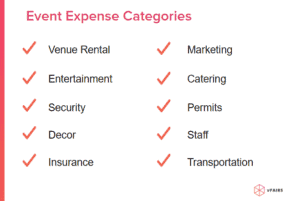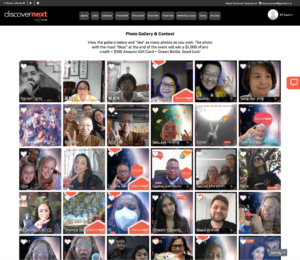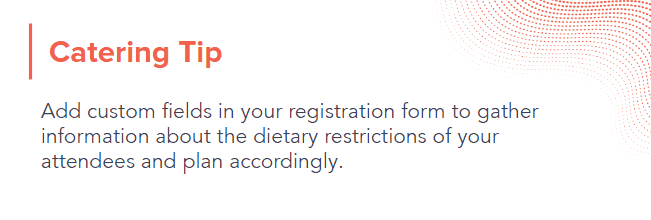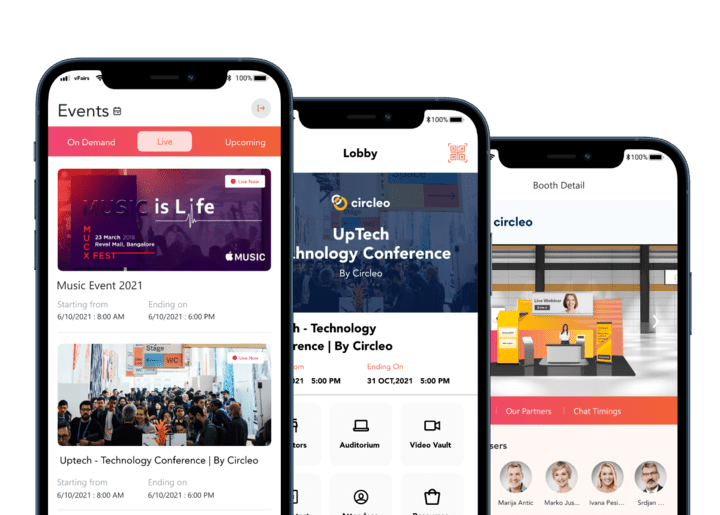The magic of a great outdoor venue can transform a gathering into an extraordinary affair, but how do you execute it to perfection? The unexpected whims of Mother Nature and complex logistics turn outdoor event planning into a challenge. However, a clear roadmap can help you arrange a successful event with unparalleled ambiance.
Whether you’re an experienced event planner seeking new inspirations or a beginner eager to plan outdoor events, this blog has it all for you. We have curated a step-by-step guide for outdoor event planning to help organizers incorporate fresh air into the events:
1. Establish a Budget
A carefully crafted outdoor event budget helps you allocate resources effectively and avoid unnecessary financial strain. Follow these steps to determine your budget during outdoor event planning:
- You need to start by identifying potential funding sources and work your way up. It will give you a realistic starting point for budgeting.
- Next, outline the scope and scale of your outdoor event. Determine the size of the audience, the number of activities, entertainment, and any additional facilities required.
- Categorize the event expenses to separately track and manage everything in an organized manner when planning an outdoor event.

- Research and get detailed quotes from vendors and service providers to estimate costs associated with each category.
- Prioritize elements essential for success and allocate substantial funds to them.
- Consider cost-saving measures for outdoor event planning and look for partnerships, sponsorships, or in-kind donations to offset some expenses.

2. Choose the Right Outdoor Venue
The venue sets the stage for the entire experience of your in-person event, so it’s essential to make a well-informed decision during outdoor event planning. The first consideration while choosing a venue is determining the type of outdoor event venue you are going for. Keep outdoor event design in mind and look for venues based on that. Here are 5 types of outdoor event examples that you can choose from based on your ideal ambiance:
- Beaches
- Countryside venues
- Parks and fields
- Sports clubs
- Stadiums and arenas
There are some considerations to make when choosing your venue during outdoor event management. Make sure that the venue can comfortably accommodate all your guests and the event’s infrastructure without compromising safety.
Also, make sure there are well-defined entry and exit points to guide the flow of the crowd in case of an emergency.
During outdoor event planning, opt for a location that aligns with your event’s theme and resonates with your target audience. Consider proximity to major transportation hubs and parking facilities to ensure ease of access for attendees.

Be Prepared for the Weather
Mother Nature can be both a delightful collaborator and an unexpected adversary. As an event organizer for outdoor event planning, you need to be well-prepared for various weather conditions.
- Don’t forget to keep a close eye on weather forecasts leading up to the event.
- Choose weather-resistant equipment, decor, and structures that can withstand the elements.
- During outdoor event planning, outline a contingency plan in case the weather takes a turn for the worse, such as a rain plan for outdoor events, postponement options, or alternative indoor spaces.
- Offer weather-appropriate amenities to ensure the comfort of your attendees and manage temperature control.
- Obtain event insurance during outdoor event management that includes coverage for weather-related risks and liabilities.
- Keep attendees informed about the weather forecast and what they should expect during the event.
3. Select a Theme and Manage Decor
Your chosen theme sets the tone and creates a cohesive atmosphere for your guests. While choosing a theme for outdoor event planning, consider the interests of your target audience and make sure to align them with the goal of your event.
To match the outdoor event design with your theme, start by gathering inspiration from various sources like Pinterest, magazines, or even nature itself. Compile these ideas into a mood board to visualize the overall decor concept.
Enhance the ambiance with related props in your outdoor event design. You can play around with table settings, centerpieces, and floral arrangements. Don’t forget the power of lights for outdoor event planning. Outdoor events do have the advantage of natural light but for evening events, you can transform the venue with strategically placed artificial lights. Play around with string lights, fairy lights, lanterns, and spotlights to create a charming atmosphere. Pay attention to detail and make sure everything aligns with your chosen theme because consistency is key here.
4. Check for Accessibility
Incorporating accessibility demonstrates your commitment to inclusivity, diversity, and equal participation. Consider the attendees with special needs and make provisions to ensure their full participation. During outdoor event management, you can customize the registration forms to add sections on disability information to be prepared beforehand.
Here are some things to keep in mind when you want to make your outdoor event accessible for all attendees:
- Assess the venue’s accessibility for wheelchair users with accessible ramps and gently sloping pathways.
- During outdoor event planning, make sure there are designated parking spots for differently abled people close to the entrance.
- Accessible restroom facilities are essential with clear signage indicating the location.
- Plan for designated seating areas for individuals with mobility impairment with an unobstructed view of the event.
- For attendees with hearing impairments, offer assistive listening devices such as hearing loop systems or wireless headsets.
- Designate quiet areas within the venue where attendees can take a break from sensory stimulation.
- Ensure food stations are set at a height suitable for all attendees, including those in wheelchairs.
- Establish accessible first aid stations staffed with personnel trained in basic first aid and CPR.
5. Promote Your Event
Event marketing is an essential part of outdoor event planning to create anticipation around your event. You will need an effective promotional strategy for a successful turnout. Here are the key steps you need to follow:
- Define Your Target Audience: Identify the specific group of people who are most likely to be interested in your event. Understand their preferences, interests, and demographics to tailor your promotional efforts to resonate with them.
- Craft a Compelling Event Brand: Convey the essence of your outdoor event with branding using memorable taglines, logos, and visual elements.
- Utilize Social Media Platforms: Engage with your audience on social media to increase visibility and encourage attendees to share their excitement. You can also onboard event influencers to promote your event on their social media pages.
- Design a Dedicated Event Landing Page: Provide comprehensive information about your outdoor event. Include the date, time, location, ticketing information, event agenda, and FAQs.

- Leverage Email Marketing: Build an email list of potential attendees and past participants to keep them informed with regular updates, exclusive offers, and reminders.
- Offer Early Bird and Group Discounts: Encourage early registrations and group attendance by offering attractive discounts.
- Leverage AI Tools: Create compelling marketing content in minutes by harnessing the power of AI tools.
Make sure to monitor the success of your promotional efforts and make required adjustments for improvement in your marketing strategy during outdoor event planning.

6. Plan Attendee Entertainment and Activities
An essential aspect of any successful outdoor event is engaging attendees with exciting activities. With diverse experiences, you can create an immersive event with a lasting impression. So if you’re confused about what should you do when planning outdoor activities, here are some ideas for outdoor event planning to add some excitement to your event:
- Virtual Games: Include a mobile app that allows attendees to play games onsite or online like scavenger hunts, and enter competitions like trivia or collecting points on the leaderboard.
- Live Performances: Arrange musicians, dancers, magicians, or comedians to entertain and captivate your audience.
- Workshops: Host hands-on workshops where participants can learn new skills.
- Adventure Activities: Offer activities like zip-lining, rock climbing, or obstacles for thrill-seekers with the help of an outdoor activity organizer.
- Photo Booths: Create branded photo booths with props and backdrops, allowing attendees to capture fun memories of the event.

- Wellness Activities: Offer yoga, meditation, or wellness classes to promote relaxation.
- Team Building Games: Host outdoor activities for team building that encourage collaboration, communication, and problem-solving among attendees.
- Gaming Zones: Incorporate video games or board games into your outdoor event setup, catering to attendees with diverse interests.
- Food and Beverage Tastings: If your event involves culinary elements, offer food and beverage tastings from local vendors or featured chefs.
You can incorporate as many or as few activities depending on the time, budget, and requirements of your outdoor event planning. You can also hire an outdoor activity organizer to take matters into their own hands.
7. Manage Catering
Food and beverages are an essential aspect of outdoor event planning. Managing catering for an outdoor event requires attention to detail and flexibility for a seamless dining experience. Here are the steps to follow to manage food and beverages when planning an outdoor event:
- Select the Right Caterer: Begin by researching and selecting a reputable and experienced catering service that specializes in outdoor events.
- Plan Menu Selections: Work closely with the caterer to customize a menu that is diverse and aligns with the event’s theme.
- Set Up Beverage Stations: Provide a selection of refreshing drinks and even consider signature drinks to tie into the event’s theme.
- Hygiene and Food Safety: Ensure that the catering service adheres to strict food safety and hygiene practices. Set up hand sanitizing stations to maintain cleanliness.
Catering must be managed well for successful outdoor event planning so make sure to start working on it ahead of time.

8. Keep Health and Safety Measures in Place
As event organizers, it is crucial to implement and maintain comprehensive health and safety measures throughout the event. During outdoor event planning, make sure to establish clearly marked first aid stations with trained medical personnel for medical assistance in emergencies.
Conduct a risk assessment of the event space to identify potential hazards and develop a comprehensive safety plan. Outline protocols for medical emergencies, severe weather, or security incidents. Train event staff on safety protocols and provide them with clear communication channels to address safety concerns promptly.
Stay up-to-date with local health guidelines and regulations when planning an outdoor event. Consider offering virtual or hybrid options for attendees who may prefer to participate remotely due to health concerns.
9. Secure Reliable Vendors and Suppliers
The quality of services provided by vendors can significantly impact the overall attendee experience. So, during outdoor event planning, make sure to conduct thorough research to identify potential vendors and suppliers who specialize in outdoor events. Verify the credentials and check the reviews of each vendor.
When planning an outdoor event, ask them to submit detailed proposals outlining their services, pricing, and deliverables and compare them to find the right one. Contracts protect both parties so always clearly outline all the details in written form.
10. Get Onsite Event Technology
By leveraging onsite event tech, you can significantly enhance the efficiency and organization of your outdoor event planning. Here is some event tech to elevate your event:
- Event Management Software: Invest in event management software that centralizes all event-related data, and makes it easier for hybrid and virtual attendees to join.
- Mobile Event App: This app can serve as a one-stop platform for event information, schedules, interactive maps, and networking opportunities. Use it to check-in attendees, reducing the long queues at the event.

- Badge Printing and Check-in: Either print all your badges beforehand or do it onsite. Scan the unique QR codes of each attendee to instantly print their badges. Allow attendees to check in with self-check-in kiosks or QR code scanners.
- Onsite Communication Tools: Enhance coordination among event staff and volunteers to address any issues promptly with radio communication.
Choose from a number of reliable outdoor event management companies that allow you to effortlessly deal with onsite, online, and hybrid events.


